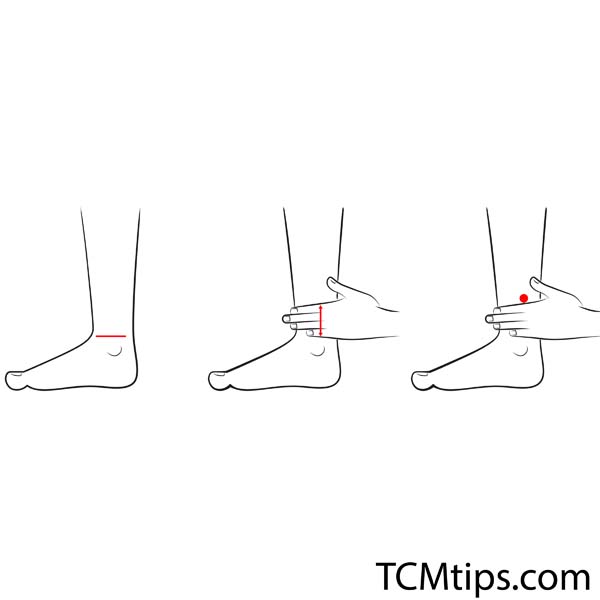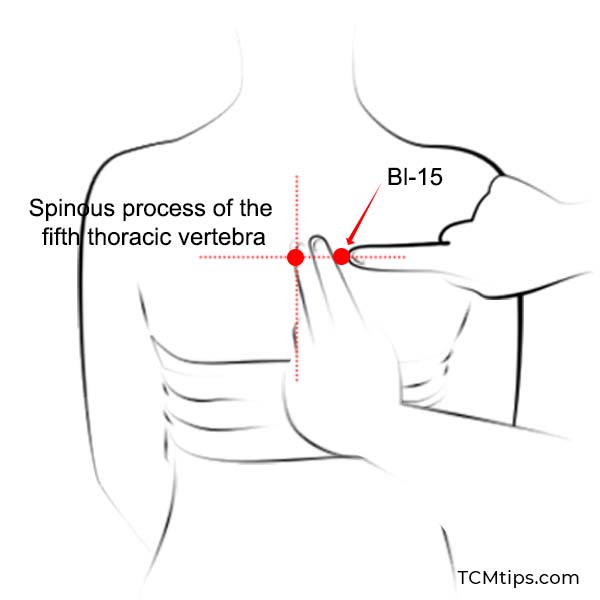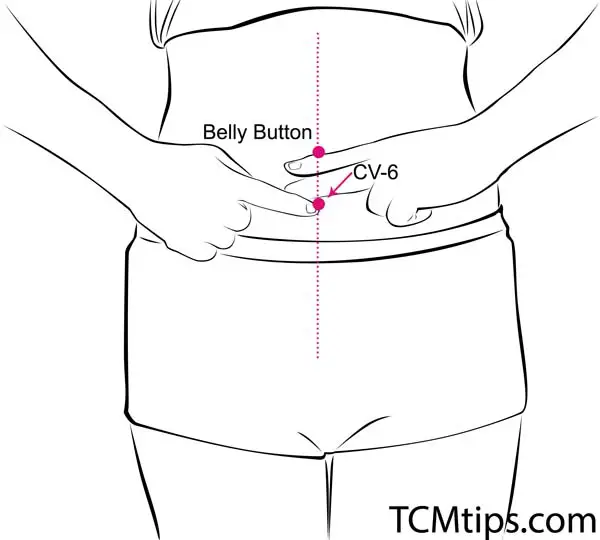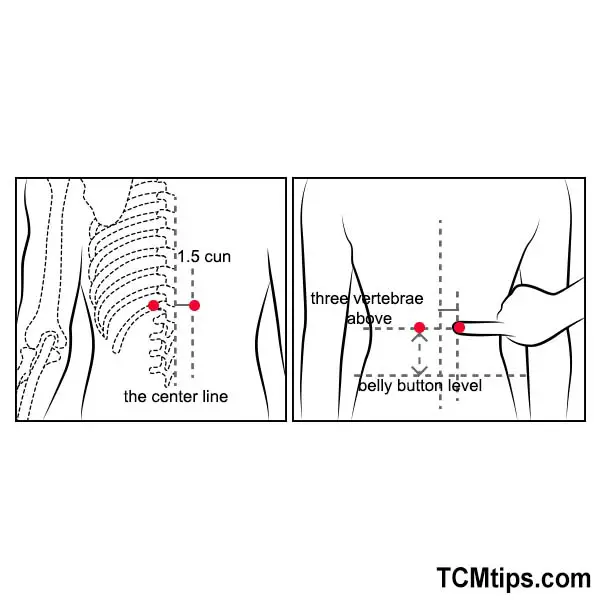Did you know there are acupressure points for ovary cyst? Well, up until the moment I was advised by a friend to look it up, I didn’t. And when I did, boy, did it change my life. Before I get into my story, let’s talk about ovarian cysts.
Ovarian endometriosis cysts, also called ‘chocolate cysts,’ can really do a number on you—from impacting fertility to causing pain and menstrual irregularities. In addition to the physical effects, ovarian cysts, by causing delays during fertility treatments, can affect the couples’ mental and emotional health.
Safe to say, we look for treatments that can help resolve the issue. And while modern treatments can help, they’re not devoid of side effects. And they may not be the best option if you’re trying to conceive.
Luckily, other avenues can help—treatments that are completely devoid of side effects, no less! Allow me to introduce you to a Traditional Chinese Medicine known as acupressure. It has, for centuries, proved to be an effective treatment for treating symptoms of endometriosis.
Can Acupuncture Help With Ovarian Cysts?
Patients suffering from excruciating pain and other symptoms of ovarian cysts can benefit from the Traditional Chinese Medicine treatment called ‘acupuncture,’ provided malignancy has been ruled out. Unlike acupressure that uses hand and finger pressure, this non-surgical treatment uses needles to meet the same objective.
Need more details about how acupuncture can help? Read on.
Can Acupuncture Get Rid of Ovarian Cysts?

Acupuncture is a non-surgical holistic treatment that can balance the endocrine system and the hormones directly related to ovulation. It treats ovarian cysts by reducing the chances of blood stagnation. Acupuncture also balances the energy circulation in the body. Aside from having no side effects, acupuncture enhances overall health to promote fertility.
When carrying out fertility treatments through acupuncture, remember, consistency and patience are key. While it is an effective treatment, acupuncture does not work overnight.
Acupoints for Treating Ovarian Cysts
Chocolate cysts form when endometrial tissue grows outside the uterine cavity and attaches itself to the ovaries. These cysts can multiply due to hyperactive glands, unhealthy diet, and lack of female hormonal balance.
To achieve hormonal balance, autonomic nerves are adjusted through acupressure points. This significantly improves blood circulation, regulates the menstrual cycle, and promotes cyst shrinkage. Here’s a case report that can help put things into perspective.
If you’re considering using acupressure, you may want to experiment with these 5 acupressure points for ovary cysts to maximize the benefits.
Acupoint: SP-10 (Other Names: Spleen-10/Xue Hai/Sea of Blood)

SP-10 Xue Hai translates to Sea of Blood in English. Using acupressure on this pressure point can help invigorate and cool blood, remove stasis, and harmonize menstruation.
To locate this pressure point, flex your knee. The pressure point can be located on the bulge of the medial portion of muscle quadriceps femoris, approximately 2 cun above the patella’s superior medial border.

This pressure point can help relieve symptoms of:
- Irregular menstruation
- Uterine bleeding
- Urticaria
- Blood heat
- Genital issues, etc
Xue Hai is also one of several exceptional acupressure points for white patches (vitiligo) and eczema.
Acupoint: SP-6 (Other Names: Spleen-6/San Yin Jiao/Three Yin Intersection)

SP-6 San Yin Jiao is called the Three Yin Intersection because it is located at the crossing point of the spleen, liver, and kidney meridians. It can strengthen the spleen, stomach, and kidneys, nourish and invigorate the blood, harmonize menstruation and the liver, and benefit urination.
To locate this pressure point, place the pinky side of your hand against the highpoint of your medial malleolus. SP-6 can be found 3 cun above the medieval malleolus at the index finger edge of your hand, on the posterior border of the tibia.
This pressure point can help relieve symptoms of:
- Postpartum faintness
- Painful periods
- Leukorrhea
- Prolapse of the uterus, etc.
This Three Yin intersection is also used as one of the pressure points to increase blood circulation in the feet and reduce the pain and the stress associated with dysmenorrhea. If you’re pregnant, you may want to skip this one.
Acupoint: Bl-15 (Other Names: Urinary Bladder-15/Xin Shu/Heart Transporter)

BL-15 Xin Shu is often called the Heart Transporter because this acupressure point harmonizes the heart by regulating its blood and Qi, resolving blood stagnation, and clearing heart heat/fire.
Xin Shu is located on the back, approximately 1.5 cun lateral to the lower border of the spinous process of T5 (the 5th thoracic vertebrae).
This pressure point can help relieve symptoms of:
- Cardiac diseases
- Heart palpitations
- Spitting of blood
- Mania
- Epilepsy, etc
Xin Shu is also one of the acupressure points for bronchitis, asthma, shortness of breath, and emphysema.
Acupoint: Ren-6 (Other Names: The Conception Vessel-6/Qi Hai/Sea of Qi)

Ren-6 Qi Hai strengthens the kidney Qi and Yang, treats prolapse, and regulates Qi.
Qi Hai is located on the anterior median line of the lower abdomen, 1.5 cun below the center of the belly button (umbilicus).
This pressure point can help relieve symptoms of:
- Infertility
- Abdominal pain
- Diarrhea
- Irregular menstruation
- Emaciation
- Overall weakness
- Poor digestion, etc.
Qi Hai pressure point is also believed to be one of the 10 best acupressure points for weight loss.
Acupoint: BI-20 (Other Names: Urinary Bladder-20/Pi Shu/Spleen Transporter)

BL-20 Pi Shu has proved to be a powerful pressure point that, upon acupressure, helps resolve dampness, improves blood flow, and harmonizes the Qi of the middle jiao.
Pi Shu is located 1.5 cun lateral to the lower border of the spinous process of T11(the 11th thoracic vertebrae)
This pressure point can help relieve symptoms of:
- Abdominal distention
- Jaundice
- Diarrhea
- Malarial diseases
- Uterine bleeding, etc
Additionally, Pi Shu has also proved to be one of the effective calming pressure points on babies. It also treats lack of appetite and abdominal bloating.

Try our Anti-Aging Gua Sha Tool designed to bring out your skin’s natural glow.
Best Gua Sha Product- Anti-Aging: The tool is designed to target 11 specific aging signs such as wrinkles and sagging skin. By following the 7-step routine, users can improve skin firmness and reduce fine lines naturally.
- Enhances Skincare Routine: It works effectively with serums and lotions, boosting absorption and efficacy of skincare products.
- Visible Skin Improvement: Users can expect a smoother complexion, reduced puffiness, and a more youthful appearance.
 P. Sze
P. Sze 

















